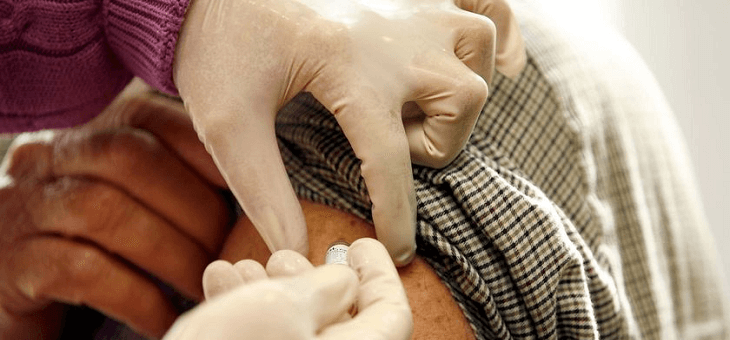New South Wales will join other states in testing sewage for polio, as cases of the largely eradicated disease emerge overseas.
Last month, authorities confirmed polio is spreading in London for the first time since the 1980s, and in July an unvaccinated person in New York was officially diagnosed with paralytic polio – the first case in nine years.
New York’s governor has declared a state of emergency after wastewater testing revealed poliovirus has been quietly circulating in parts of the state for some time.
Professor Michael Toole, associate principal research fellow at the Burnet Institute, told the ABC News Daily podcast another outbreak in Australia is a moderate, yet plausible risk.
He said New South Wales has now assembled an expert panel to look at how it can adapt COVID wastewater surveillance to include polio.
“That’s very important because it’s an early warning signal,” Professor Toole said.
“You don’t want to wait, as they did in New York, until there’s a person with paralysis because then it’s too late.”
NSW Health said while there is no current indication of polio infection, it hopes to begin sewage testing as soon as possible.
Professor Toole said wastewater testing in Victoria has been underway for some time, beginning after the 2013 outbreak in Israel, as part of a national surveillance program.
Polio virus can attack a person’s brain and spinal cord, causing paralysis of muscles and possibly permanent disability and death.
It’s largely transmitted when someone comes into contact with faecal matter of an infected person, especially among children who may contract it by putting contaminated objects such as toys into their mouths.
Australia had two major polio epidemics in the 1930s and the 1950s before American scientist Dr Jonas Salk developed the first vaccine in 1952.
A dramatic reduction in cases all over the world followed.
It’s estimated that 2–4 million Australians were infected with the virus and 40,000 people developed paralytic polio.
Professor Toole said vaccination rates today were “pretty high, 90-95 per cent, but of course, there are pockets of low coverage.”
But, despite generally high immunisation, he said Australians shouldn’t be complacent about the risk, particularly since the strain that paralysed the patient in New York has been genetically linked to sewage samples taken in both London and Israel.
“Our borders are open,” he said.
“If we’ve learnt anything in the last three years, we should take notice of any potential risk.”
He says Australian-Jewish communities in particular may be at higher risk of contracting the virus because they may be more likely to travel to areas where the virus has been detected.
Experts fear more cases
The ABC News Daily podcast spoke to Dr Patricia Schnabel Ruppert, who is coordinating efforts to respond to the outbreak of polio in Rockland County, New York.
She is frightened more paralytic cases will emerge.
“That is our fear,” said Dr Schnabel Ruppert, who is the health commissioner of Rockland County.
“I go to bed at night thinking of it. I wake up thinking of it.”
“None of us in the health department had ever seen a case prior to this.”
Polio is asymptomatic in 75 per cent of cases, and a little under 25 per cent have mild flu-like symptoms.
However, about one in every 200 people who contract polio develop paralysis, which is irreversible.
“So our patient with paralysis is the tip of the iceberg,” Dr Schnabel Ruppert said.
“The intent is not to panic, but we must inform the public so that they know what they can do to protect themselves.”
“The best way to prevent this is to be vaccinated. There really is no treatment otherwise.”
 © 2020 Australian Broadcasting Corporation. All rights reserved.
© 2020 Australian Broadcasting Corporation. All rights reserved.
ABC Content Disclaimer

